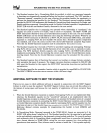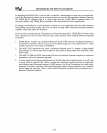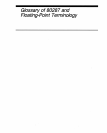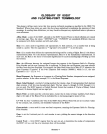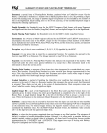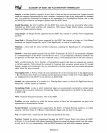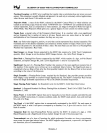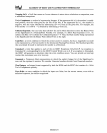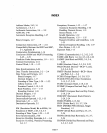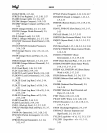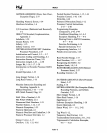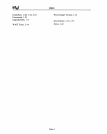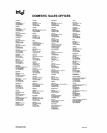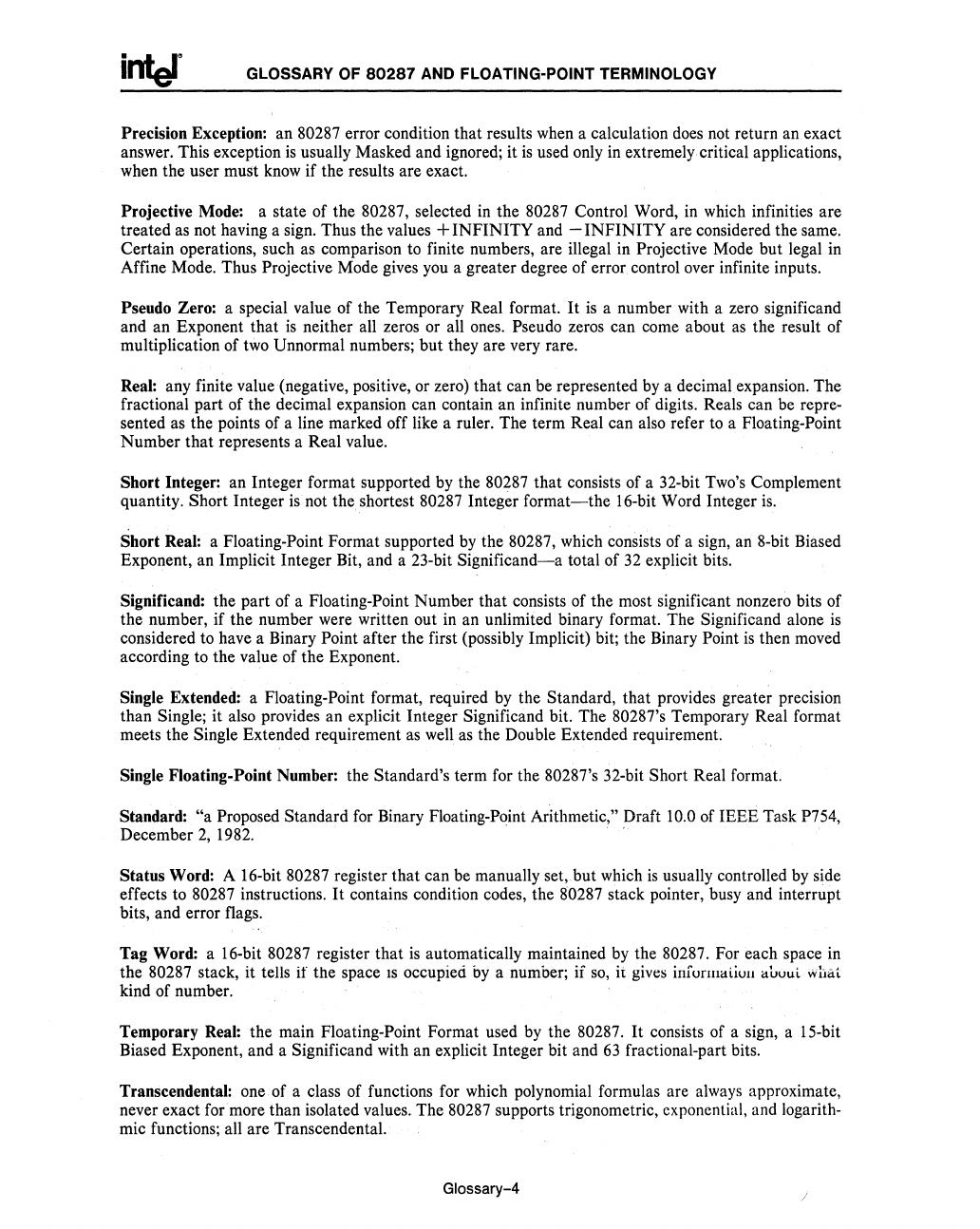
GLOSSARY OF
80287
AND FLOATING-POINT TERMINOLOGY
Precision
Exception:
an 80287 error condition that results when a calculation
does
not return
an
exact
answer. This exception
is
usually Masked and ignored; it
is
used only in extremely critical applications,
when the user must
know
if the results are exact.
Projective
Mode:
a state of the 80287, selected in the 80287 Control Word, in which infinities are
treated as not having a sign. Thus the values
+ INFINITY and -
INFINITY
are considered the same.
Certain operations, such as comparison to finite numbers, are illegal in Projective Mode but
legal.in
Affine Mode. Thus Projective Mode gives
you
a greater degree of error control over infinite inputs.
Pseudo
Zero:
a special value of the Temporary Real format.
It
is
a number with a zero significand
and an Exponent that
is
neither all zeros or all ones. Pseudo zeros can come about as the result of
multiplication of
two
Unnormal numbers; but they are very rare.
Real:
any finite value (negative, positive, or zero) that can be represented
by
a decimal expansion. The
fractional part of the decimal expansion can contain an infinite number of digits. Reals can be
repre-
sented as the points of a line marked off like a ruler. The term Real can also refer to a Floating-Point
Number that represents a Real value.
Short
Integer:
an Integer format supported by the 80287 that consists of a 32-bit Two's Complement
quantity.
Short Integer
is
not theshortest 80287 Integer
format-the
16-bit Word Integer
is.
Short
Real:
a Floating-Point Format supported
by
the 80287, which consists of a sign, an 8-bit Biased
Exponent, an Implicit Integer Bit, and a 23-bit
Significand-a
total of
32
explicit bits.
Significand:
the part of a Floating-Point Number that consists of the most significant nonzero bits of
the number, if the number were written out in an unlimited binary format. The Significand alone
is
considered
to
have a Binary Point after the first (possibly Implicit) bit; the Binary Point
is
then moved
according
to
the value of the Exponent.
Single
Extended:
a Floating-Point format, required
by
the Standard, that provides greater precision
than
Single; it also provides an explicit Integer Significand bit. The 80287's Temporary Real format
meets the
Single Extended requirement
as
well
as
the Double Extended requirement.
Single Floating-Point
Number:
the Standard's term for the 80287's 32-bit Short Real format.
Standard:
"a
Proposed Standard
for
Binary Floating-Point Arithmetic," Draft 10.0 of IEEE Task P754,
December
2,
1982.
'.
Status
Word:
A 16-bit 80287 register that can be manually set,.but which
is
usually controlled
by
side
effects to 80287 instructions.
It
contains condition codes, the 80287 stack pointer, busy and interrupt
bits, and error flags.
Tag
Word:
a 16-bit 80287 register that
is
automatically maintained
by
the 80287. For each space in
the 80287 stack, it tells if the space
1S
occupied
by
a number;
ii
so,
it
gives
infunll<liiull <luuui
wliiit
kind of number.
Temporary
Real:
the main Floating-Point Format used by the 80287.
It
consists of a sign, a 15-bit
Biased Exponent, and a Significand with an explicit Integer bit and
63
fractional-part bits.
Transcendental:
one of a class of functions
for
which polynomial formulas are always approximate,
never exact for more than isolated values. The 80287 supports trigonometric, exponential, and logarith-
mic functions; all are Transcendental.
Glossary-4
J



